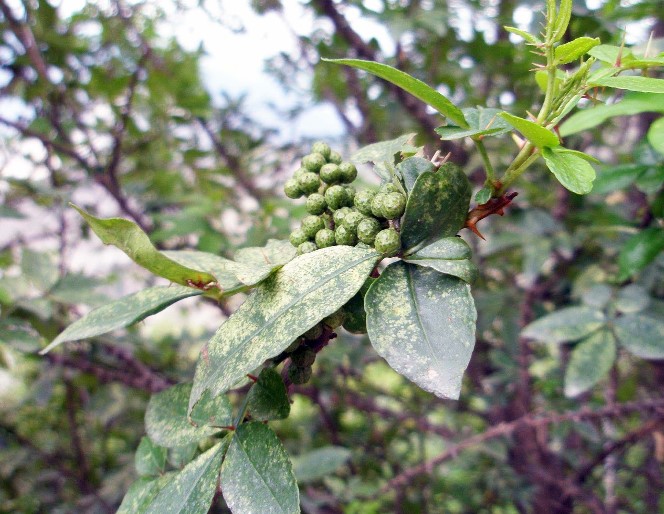Product Description
Zanthoxylum armatum is a small shrub reaching up to 5m in height. The plants have long and straight spines on branchlets and leaf stalks. Leaves opposite, pinnately compound with narrowly winged stalks, leaflets 2-6 pairs, ovate to lanceolate, 5 cm toothed, sparsely gland-dotted. Flowers green or yellow colored and appear in short branched lateral clusters. Flowering occurs in April-May and fruiting in July-November. It is distributed throughout Nepal within the altitudinal range of 1100m to 2500m. It appears as shrubberies on cleared forests, degraded slopes, and edges of cultivated lands.
Extraction
Zanthoxylum oil is extracted by the steam distillation of the dried fruits. The fruits yield up to 3% of Zanthoxylum oil, but on average 2.3% oil has been extracted at the commercial level. The oil content varies according to the habitat it grows, and the maturity of the fruits.
Uses
Ripe fruits are traditionally used as a spice. The fruits are used for toothache, gastritis, cough and cold, tonsillitis, headache, fever, high altitude sickness, dizziness, diarrhea, and dysentery. Bark, fruits, and seeds are known for posing digestive, antiseptic, anthelmintic, carminative, depurative, analgesic, diuretic, diaphoretic, deodorant, and disinfectant properties. Zanthoxylum oil is used in a wide range of aroma-therapeutic uses such as insect bites, skin infections, wounds, arthritis, joint and muscular pain, neuralgia, rheumatism, sprain, dyspepsia, indigestion, headache, nervous tension, migraine, etc.
It is also used as a flavoring agent in the confectionery industry, manufacture of soft drinks, used as a fragrance in the perfumery industry, and to prepare a wide range of pharmaceutical products.
It is also used as a flavouring agent in the confectionary industry, manufacture of soft drinks, used as fragrance in perfumery industry and to prepare wide range of pharmaceutical products.
